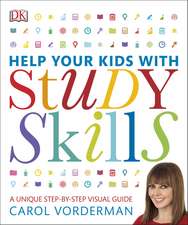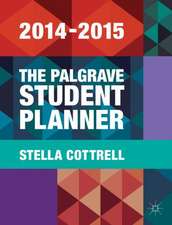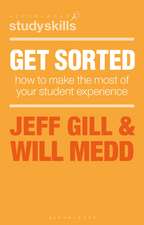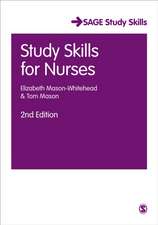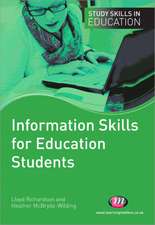How to Read Journal Articles in the Social Sciences: A Very Practical Guide for Students: Student Success
Autor Phillip C. Shonen Limba Engleză Paperback – 2 aug 2015
Refreshingly free of jargon and written with you in mind, it’s packed full of interdisciplinary advice that helps you to decode and critique academic writing. The author’s fuss free approach will improve your performance, boost your confidence and help you to:
- Read and better understand content
- Take relevant effective notes
- Manage large amounts of information in an easily identifiable and retrievable format
- Write persuasively using formal academic language and style.
- Additional examples across a range of subjects, including education, health and sociology as well as criminology
- Refined terminology for students in the UK, as well as around the world
- More examples dealing specifically with journal articles.
‘I have used the book over the last five years with my students with great success. The book has helped students to develop their critical thinking, reading and writing skills and when it comes to writing a dissertation they have used the code sheet in their own writing.’ - Pete Allison, Head of the Graduate School of Education, University of Edinburgh
The Student Success series are essential guides for students of all levels. From how to think critically and write great essays to planning your dream career, the Student Success series helps you study smarter and get the best from your time at university. Visit the SAGE Study Skills hub for tips and resources for study success!
| Toate formatele și edițiile | Preț | Express |
|---|---|---|
| Paperback (1) | 162.36 lei 22-36 zile | +10.80 lei 5-11 zile |
| SAGE Publications – 2 aug 2015 | 162.36 lei 22-36 zile | +10.80 lei 5-11 zile |
| Hardback (1) | 438.93 lei 43-57 zile | |
| SAGE Publications – 2 aug 2015 | 438.93 lei 43-57 zile |
Din seria Student Success
-
 Preț: 187.17 lei
Preț: 187.17 lei -
 Preț: 147.51 lei
Preț: 147.51 lei -
 Preț: 123.47 lei
Preț: 123.47 lei -
 Preț: 217.76 lei
Preț: 217.76 lei -
 Preț: 216.95 lei
Preț: 216.95 lei -
 Preț: 138.31 lei
Preț: 138.31 lei -
 Preț: 173.28 lei
Preț: 173.28 lei -
 Preț: 135.51 lei
Preț: 135.51 lei -
 Preț: 133.76 lei
Preț: 133.76 lei -
 Preț: 225.16 lei
Preț: 225.16 lei -
 Preț: 216.84 lei
Preț: 216.84 lei -
 Preț: 122.10 lei
Preț: 122.10 lei -
 Preț: 148.33 lei
Preț: 148.33 lei -
 Preț: 217.54 lei
Preț: 217.54 lei -
 Preț: 179.19 lei
Preț: 179.19 lei -
 Preț: 242.99 lei
Preț: 242.99 lei -
 Preț: 214.21 lei
Preț: 214.21 lei -
 Preț: 164.22 lei
Preț: 164.22 lei -
 Preț: 131.36 lei
Preț: 131.36 lei -
 Preț: 132.43 lei
Preț: 132.43 lei -
 Preț: 163.45 lei
Preț: 163.45 lei -
 Preț: 147.58 lei
Preț: 147.58 lei -
 Preț: 153.74 lei
Preț: 153.74 lei -
 Preț: 231.29 lei
Preț: 231.29 lei -
 Preț: 165.04 lei
Preț: 165.04 lei -
 Preț: 189.13 lei
Preț: 189.13 lei -
 Preț: 250.19 lei
Preț: 250.19 lei -
 Preț: 147.58 lei
Preț: 147.58 lei -
 Preț: 139.19 lei
Preț: 139.19 lei -
 Preț: 144.74 lei
Preț: 144.74 lei -
 Preț: 236.47 lei
Preț: 236.47 lei - 15%
 Preț: 609.11 lei
Preț: 609.11 lei
Preț: 162.36 lei
Nou
Puncte Express: 244
Preț estimativ în valută:
31.07€ • 32.52$ • 25.86£
31.07€ • 32.52$ • 25.86£
Carte disponibilă
Livrare economică 10-24 martie
Livrare express 21-27 februarie pentru 20.79 lei
Preluare comenzi: 021 569.72.76
Specificații
ISBN-13: 9781473918801
ISBN-10: 1473918804
Pagini: 144
Dimensiuni: 170 x 242 x 10 mm
Greutate: 0.26 kg
Ediția:Second Edition
Editura: SAGE Publications
Colecția Sage Publications Ltd
Seria Student Success
Locul publicării:London, United Kingdom
ISBN-10: 1473918804
Pagini: 144
Dimensiuni: 170 x 242 x 10 mm
Greutate: 0.26 kg
Ediția:Second Edition
Editura: SAGE Publications
Colecția Sage Publications Ltd
Seria Student Success
Locul publicării:London, United Kingdom
Recenzii
Shon provides an excellent guide on how to read journal articles. The reading code sheet helps to demystify the role of journal articles as proposals to knowledge and journals as forums for debate. I have used the book over the last five years with my students (many of whom are international and studying in a second language) with great success. The book has helped students to develop their critical thinking, reading and writing skills and when it comes to writing a dissertation they have used the code sheet in their own writing.
This is an excellent ‘how-to’ book on the skill of reading and writing critical literature reviews. Its practical guidance is offered in clear and accessible ways. The Reading Code Sheet developed by Chong Ho Shon is particularly useful when putting this book into practice. I recommend it to both students and colleagues.
Teachers assume that by the time youngsters reach secondary school age they are competent readers. However, unless they have been trained or have trained themselves to do otherwise, they probably read in the same way they were taught to when they were five years old. This is not an easy read, being aimed at university students... and their lecturers. However, I believe that it could be useful for teachers who despair at their pupils’ poor reading habits and/or low retention rates.
The book has the potential to interest students in a very systematic way to read academic articles. Such systems have great benefit for students who do not take easily to reading for academic purposes. Some of the codes could be helpful for most student guidance, particularly being able to identify critiques of previous literature, gaps and findings in articles and synthesising them to produce rationales for their own research.
This book, part of the Sage Study skills guides, provides a supportive framework to allow students to develop and refine their reading skills. Having used the reading codes myself, I would recommend it as a valuable resource for students to quickly ascertain relevant content within articles. A useful companion to this book is Shon’s book in the same series The Quick Fix Guide to Academic Writing: How to avoid big mistakes and small errors, which uses the reading codes as a means of developing academic writing.
This is an excellent ‘how-to’ book on the skill of reading and writing critical literature reviews. Its practical guidance is offered in clear and accessible ways. The Reading Code Sheet developed by Chong Ho Shon is particularly useful when putting this book into practice. I recommend it to both students and colleagues.
Teachers assume that by the time youngsters reach secondary school age they are competent readers. However, unless they have been trained or have trained themselves to do otherwise, they probably read in the same way they were taught to when they were five years old. This is not an easy read, being aimed at university students... and their lecturers. However, I believe that it could be useful for teachers who despair at their pupils’ poor reading habits and/or low retention rates.
The book has the potential to interest students in a very systematic way to read academic articles. Such systems have great benefit for students who do not take easily to reading for academic purposes. Some of the codes could be helpful for most student guidance, particularly being able to identify critiques of previous literature, gaps and findings in articles and synthesising them to produce rationales for their own research.
This book, part of the Sage Study skills guides, provides a supportive framework to allow students to develop and refine their reading skills. Having used the reading codes myself, I would recommend it as a valuable resource for students to quickly ascertain relevant content within articles. A useful companion to this book is Shon’s book in the same series The Quick Fix Guide to Academic Writing: How to avoid big mistakes and small errors, which uses the reading codes as a means of developing academic writing.
Cuprins
Chapter 1: The Challenges of Reading
Chapter 2: Trying to Fix Mechanical and Structural Writing Problems with Abstract Tools
Chapter 3: Should I even Read This? How to Read the Abstract, General Introduction and Methods Section
Chapter 4: So What? How to Read the General Literature Review, Psychology Introductions, and Results Sections
Chapter 5: Becoming a Part of the Scholarly Community: How to Read the Discussion and Conclusion
Chapter 6: Highlighting and Organizing the ROF, SPL, CPL, GAP, RFW and POC
Chapter 7: Will the Reading Code Organization Sheet Work on Non-social Science Texts?
Chapter 8: Concluding Remarks
Chapter 2: Trying to Fix Mechanical and Structural Writing Problems with Abstract Tools
Chapter 3: Should I even Read This? How to Read the Abstract, General Introduction and Methods Section
Chapter 4: So What? How to Read the General Literature Review, Psychology Introductions, and Results Sections
Chapter 5: Becoming a Part of the Scholarly Community: How to Read the Discussion and Conclusion
Chapter 6: Highlighting and Organizing the ROF, SPL, CPL, GAP, RFW and POC
Chapter 7: Will the Reading Code Organization Sheet Work on Non-social Science Texts?
Chapter 8: Concluding Remarks
Notă biografică
Descriere
This easy to follow guide reveals a tried and tested strategy for decoding social science journal articles, using a specially developed reading code.

